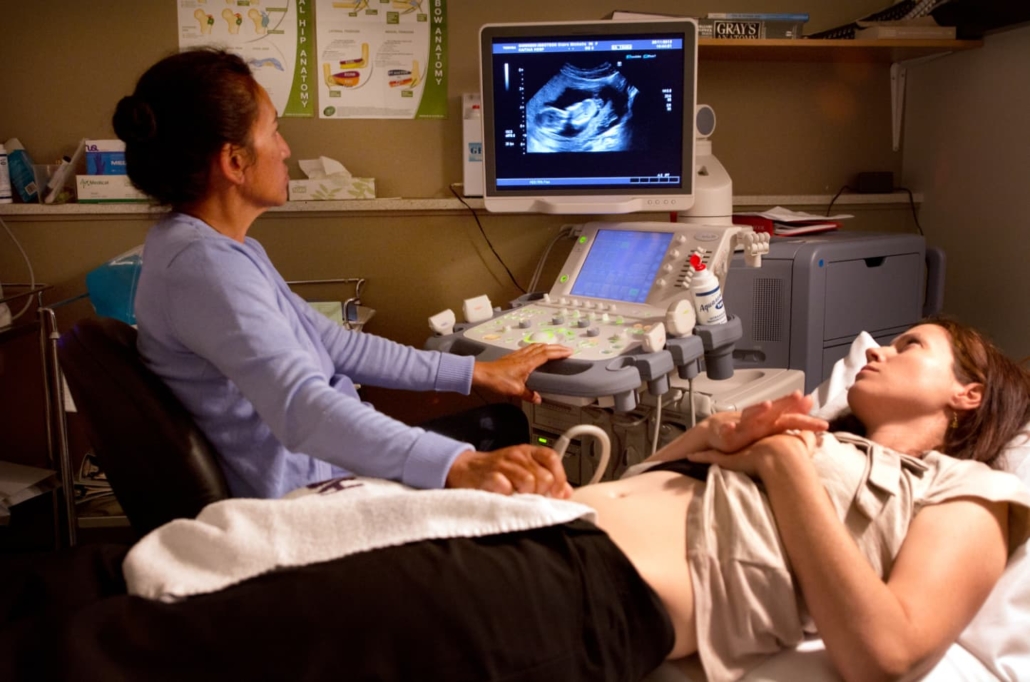Groundbreaking AI tool rivals expert sonographers in estimating gestational age
A new artificial intelligence-enabled ultrasound device allows novice users to estimate gestational age as accurately as trained sonographers, potentially revolutionising prenatal care in resource-limited settings.
Accurate estimation of gestational age is crucial for providing appropriate prenatal care and guiding obstetric decision-making. However, in many low-resource settings, access to skilled sonographers and high-end ultrasound equipment is limited. A recent study published in JAMA [1] has demonstrated that a novel artificial intelligence (AI) tool can overcome these barriers, potentially transforming prenatal care delivery on a global scale.
The promise of AI in obstetric ultrasonography
The study, conducted by researchers at the University of North Carolina at Chapel Hill and the University of Zambia, evaluated the diagnostic accuracy of an integrated AI tool in estimating gestational age from blind ultrasound sweeps. The results showed that novice users with no prior training in ultrasonography could estimate gestational age as accurately as credentialed sonographers using standard biometry on high-specification machines.
Dr Jeffrey S. A. Stringer, the study’s corresponding author, emphasised the significance of these findings: “Our study demonstrates that an AI-enabled, portable ultrasound device can estimate gestational age as accurately as an expert sonographer using an expensive, high-specification machine. This high degree of accuracy was obtained even though the users of the device had no formal training in sonography.”
Study design and methodology
The prospective diagnostic study was conducted in Lusaka, Zambia, and Chapel Hill, North Carolina, involving 400 pregnant patients aged 18 years or older. The participants had a median age of 29 years and a median body mass index of 25.9, with singleton, non-anomalous foetuses.
Novice users performed blind sweeps of the maternal abdomen using the AI-enabled device, while trained sonographers conducted standard foetal biometry using conventional ultrasound equipment. The study compared the mean absolute error (MAE) of gestational age estimates between the two methods, with a prespecified equivalence margin of ±2 days.
Impressive results across multiple gestational windows
In the primary evaluation window (14 0/7 to 27 6/7 weeks’ gestation), the AI-enabled device demonstrated equivalence to standard ultrasonography, with an MAE difference of just 0.2 days (95% CI, −0.1 to 0.5). Remarkably, 90.7% of AI-generated estimates fell within 7 days of the established gestational age, compared to 92.5% for standard ultrasonography.
The AI tool’s performance remained consistent across study sites and body mass index categories. Equivalence was also demonstrated in the secondary window (20 0/7 to 36 6/7 weeks’ gestation), although accuracy decreased in the tertiary window (37 0/7 to 40 6/7 weeks’ gestation), a finding consistent with the known limitations of ultrasound dating in late pregnancy.
Implications for global maternal health
Dr Stringer highlighted the potential impact of this technology on global maternal health: “The most important takeaway is the potential democratization of a critical prenatal diagnostic tool. By enabling accurate gestational age estimation without the need for expensive equipment or specialized training, this technology could significantly expand access to quality prenatal care in resource-limited settings worldwide.”
The study’s findings align with the World Health Organization’s goal of providing ultrasound estimation of gestational age for all pregnant individuals. By making expert-level diagnostics accessible in remote or underserved areas, this AI-enabled approach could lead to improved maternal and neonatal outcomes on a large scale.
Looking to the future
While the results are promising, the researchers acknowledge several limitations and challenges. The study’s relatively modest sample size and the need for further details on the level of training required for novice users are areas that warrant additional investigation.
Moreover, the implementation of AI-enabled ultrasound tools in low- and middle-income countries (LMICs) faces logistical, technical, and training challenges. Ensuring consistent availability and maintenance of hardware and software, reliable power sources, and internet connectivity for updates and data transmission are crucial considerations for widespread adoption.
Beyond gestational age estimation
The potential applications of AI in obstetric ultrasonography extend beyond gestational age estimation. Future developments may include the detection of foetal anomalies, analysis of foetal growth patterns, and identification of placental abnormalities. However, experts caution that the use of AI for more sophisticated ultrasound assessments, such as anatomic surveys and Doppler studies, still faces limitations and requires further research.
A step towards improved global maternal care
While the AI-enabled ultrasound tool represents a significant advancement in prenatal care, it is important to recognise that it is not a standalone solution. To achieve meaningful improvements in maternal and child health outcomes globally, the implementation of such technologies must be accompanied by broader health system strengthening, including the training of healthcare professionals, provision of basic medications and equipment, and development of effective referral systems.
However, the integration of AI-enabled tools in obstetric care holds great promise for enhancing the quality and accessibility of prenatal care worldwide, particularly in resource-limited settings.
Reference:
- Stringer, J. S. A., Pokaprakarn, T., Prieto, J. C., et al. (2024). Diagnostic accuracy of an integrated AI tool to estimate gestational age from blind ultrasound sweeps. JAMA. Advance online publication. https://doi.org/10.1001/jama.2024.10770


